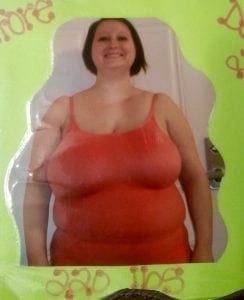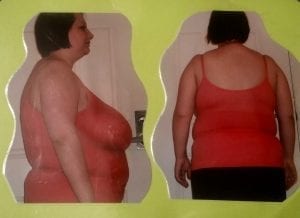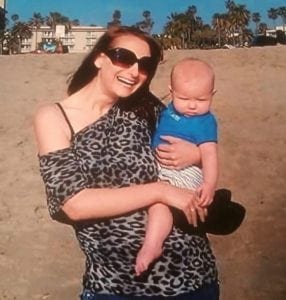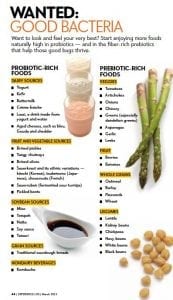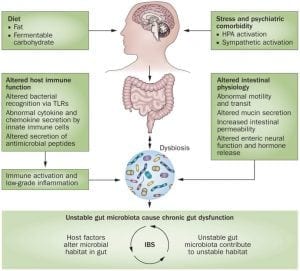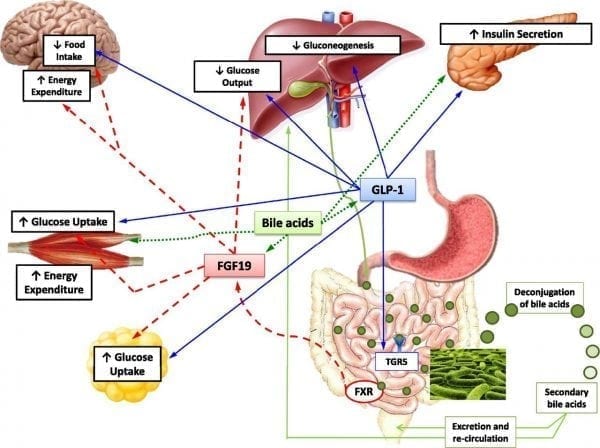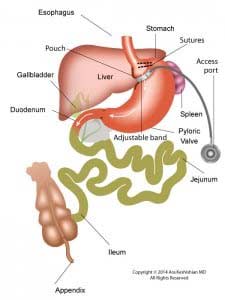Tag: Weight loss surgery
Weight Loss Surgery Effects On Iron AbsorptionExclusive Member Content
June 06, 2016 9:40 am
Shared Success Story Update- Cyndi RNY to Duodenal Switch
June 06, 2016 6:37 am
Three Years Out Cyndi E … RNY to Duodenal Switch Revision
The Journey to get to the three year mark, has been amazing! And truly, The JOY is in the JOURNEY.
I am a JOYFUL “Third Time’s the Charm Revisionista”…. This is my new title…. And I say this proudly!!
For too many years (like 45! at least) I carried the shame and blame of being overweight and beat myself up on the inside. I tried everything, from age 13. I tried every diet, every program, and yes, I will say it, I have had THREE, yes THREE surgeries. And then, I let others convince me, and I bought into this, that I was a failure… BUT, I am not a failure. Surgery fails. For a long time, I could not say that, again with the SHAME word. BUT, I am done with shame, and I am done with blame. I no longer blame myself and I no longer shame myself or my body, because now, she and I, my body and I, are friends, and we are nice to each other.
Thankfully for me, I was in the right place at the right time, and met Dr. Ara Keshishian… My story with Dr. Keshishian, is simple. Dr. K was the first Doctor that did not blame me for my weight. He explained that each weight loss surgery has different measures of success, and percentages by weight loss surgery and outcomes. He educated me. He did not blame or shame me, he encouraged me. He also did an Endoscopy and found that I has a Gastro-Gastric Fistula. Simply put, this was an abnormal connection between the bypassed stomach and the small pouch created by the RNY Gastric Bypass surgery. Food could travel two ways, thus rendering the Gastric Bypass ineffective causing weight gain.
Dr. Keshishian performed my revision from RNY to Duodenal Switch on May 31, 2013. The procedure corrected my anatomy, enabling me to lose weight and regain my health. I have no complications, no issues post surgery.
Today, being a “Three Year Old” RNY to Duodenal Switch revisionista, I have a better perspective as a relative “newbie”. I am not a prisoner of my weight. I have lost 125-130 pounds, I am 5’12” (6 feet lol) 61 years old and for the first time in my life at a NORMAL WEIGHT! I do not fear, any longer, that I will gain my weight back. I am, however, mindful that I am consistent in my new habits and patterns that I have put in place, that keep me on track. I am also accountable. To myself, also to my Weight Loss Support Group, here in Paso Robles, to some fellow DS girlfriends that
I talk with about challenges, and with Dr. Keshishian. I am not held captive by my limitations, or my weight, and now I live with the possibilities each day brings and the fun challenges I put in front of me to conquer.
To the “newbies” I say, please take your time, treat yourself kindly, with your inner voice. This is not a race, this is a journey. Don’t rush, it’s ok to take it slow, listen to your body. And do not compare your journey to anyone else. You are you! You do you! You can do this well, one day at a time. Listen to the sage advice of those who went before you. We too have learned by trial and error. Be willing to sacrifice in the short term, for the gift of the long term life. Your DS is forgiving, you be forgiving as well!!!
Remember: WATER, PROTEIN, SUPPLEMENTS, EVERYTHING ELSE, EAT CLOSE TO THE DIRT, ELMO DIET
With JOY, Cyndi
Shared Success Story- Heidi
June 02, 2016 7:59 am
My name is Heidi and this is my weight loss journey. I had been struggling with my weight for years and was actively researching different surgical procedures available. I was also trying everything to lose the weight on my own. My wake up call to take action was one night when my husband said, “I’m worried about you and want you around for a long time.” I knew I had to do something. If someone loved me that much I needed to love myself enough to change.
So the very next day I made an appointment with my Primary Care Physician who recommended Dr. Ara Keshishian. That afternoon I called Dr. Keshishian’ office, scheduled a consultation and began what was about to be one of the greatest journeys of my life. I was approved within a month and ready to go.
In 2012, I had my Duodenal Switch with the great Dr. Keshishian. I was hopeful post op and determined to succeed. I knew with my husband’s and family’s love and support I could do it. I wanted to lose the weight for me, my husband and our future children so they had the healthy, happy mom they deserved. My Surgery weight was 220 ( Started at 230) I reached my goal at 10 months post op at 125lbs. Since having my DS I have had 1 (almost 2) amazing son’s. Duodenal Switch made this possible. I have my older son and I am currently 8 months pregnant with my 2nd son. Duodenal Switch did not just allow me to lose the weight that kept me from living life but it allowed me to get healthy and live life to the fullest. I am grateful everyday for my DS, my amazing husband, my boys, and Dr. Keshishian.
I am simply blessed. Would I do it again? In a heart beat.
Starting weight- 230
Surgery weight- 220
Goal Weight- 125
Current-130
Probiotics and Prebiotics
May 26, 2016 1:59 pm
Probiotics and Prebiotics are an important part of our overall general and gastrointestinal health. The gastrointestinal (GI) tract is a large, muscular tube that allows the digestion of food. The intestinal lining of the tract plays a role in absorbing vital nutrients and acts as a barrier for the macromolecules and microorganism from circulation. Our GI system is exposed to many bacterial agents that undergo fermentation in the mucosa. The type of fermentation carried out in the gut is greatly influenced by the types of bacteria found in the lumen.
The GI microflora is an elaborate ecosystem consisting of neutral and beneficial bacteria whose balance impacts overall health. This microenvironment consists of about 400 different bacterial species that make up approximately 100 billion organisms in the gut. The flora functions in nutrient consumption, vitamin production, detoxification, hormone activity, and other regulatory processes. Abnormal microbial balance or colonization results in dysbiosis, where the deviant nature of bacteria may become pathological (7). Dysbiosis is a contributing factor to many degenerative and chronic diseases.
Benefits of Probiotics and Prebiotics:
Our bodies are full of both good and bad bacteria. Probiotics contain live bacteria and yeasts, whose activity is beneficial when present in appropriate amounts (11,12). These helpful microorganisms regulate the body’s systems in several ways:
- Gastrointestinal: Probiotics work to reduce infectious diarrhea, specifically types identified by antibiotic use (1). Certain strains enhance stool consistency and bowel movement frequency. Probiotics have also proven effective in alleviating bloating and gas found in irritable bowel syndrome (9). Further studies suggest that specialized strains aid in milder forms of ulcerative colitis, an inflammatory bowel disease. A recent Russian study suggested eradication of SIBO and IBS using a combination of Bifidobacterium bifidum, Bifidobacterium longum, Bifidobacterium infantis and Lactobacillus rhamnosus, called Florasan-D available in Russia. These findings were presented at the 2015 Gut Microbiota for Health World Summit in Barcelona, Spain by Elena Polouektova, MD, a researcher at I.M. Sechenov First Moscow State Medical University.
- Weight Loss: A clinical study (8) revealed reduced body fat in patients who consumed yogurt (probiotic source), although there were no observed changes in weight. Another study, published in the 2011 European Journal of Clinical Nutrition (6), found that subjects who consumed fermented milk that contained a specific bacterial strain observed abdominal fat and weight loss, when compared to subjects drinking a control.
- Immunity: Although the clinical implications of this evidence are still being studied, it has been found that immune response strength is greatly improved through certain strains of probiotics (2,4). They have also been shown to lighten hypersensitivity reactions and normalize added mucosal dysfunction.
- Other Uses: Bacteria also reside in the mouth. Probiotics play an essential role in oral health, where they reduce throat infection, bad breath and periodontal disease, a gum infection (5). There have been claims that probiotics lower the effects of some skin conditions, prevent colon cancer, lower blood pressure and cholesterol, and alleviate anxiety and depression (3). Future studies are working towards the consistency of these claims.
Probiotics regulate the movement of food through the digestive system. They help replace unwanted bacteria and maintain the mucosal microenvironment to avoid dysfunction. Prebiotics are fiber compounds that move through the GI tract undigested. Prebiotics are important in stimulating probiotic growth and maintaining a stable environment for their optimal activity (13). The best way to get all the powerful benefits of probiotics is through consuming foods that are prepared by bacterial fermentation. Supplements are also available. Previous blog regarding probiotic supplements here. Previous blog regarding probiotics, C.Diff and Hyperoxaluria here.
Written by: Mariam Michelle Gyulnazaryan & Dr. Ara Keshishian
References
- Bowen, J. M., Stringer, A. M., Gibson, R. J., Yeoh, A. S., Hannam, S., & Keefe, D. M. (2007). VSL# 3 probiotic treatment reduces chemotherapy-induced diarrhoea and weight loss. Cancer biology & therapy, 6(9), 1445-1450.
- Chiang, B. L., Sheih, Y. H., Wang, L. H., Liao, C. K., & Gill, H. S. (2000). Enhancing immunity by dietary consumption of a probiotic lactic acid bacterium (Bifidobacterium lactis HN019): optimization and definition of cellular immune responses. European journal of clinical nutrition, 54(11), 849-855.
- Foster, J. A., & Neufeld, K. A. M. (2013). Gut–brain axis: how the microbiome influences anxiety and depression. Trends in neurosciences, 36(5), 305-312.
- Isolauri, E., Sütas, Y., Kankaanpää, P., Arvilommi, H., & Salminen, S. (2001). Probiotics: effects on immunity. The American journal of clinical nutrition, 73(2), 444s-450s.
- Krasse, P., Carlsson, B., Dahl, C., Paulsson, A., Nilsson, A., & Sinkiewicz, G. (2005). Decreased gum bleeding and reduced gingivitis by the probiotic Lactobacillus reuteri. Swedish dental journal, 30(2), 55-60.
- Merenstein, D., Murphy, M., Fokar, A., Hernandez, R. K., Park, H., Nsouli, H., … & Shara, N. M. (2010). Use of a fermented dairy probiotic drink containing Lactobacillus casei (DN-114 001) to decrease the rate of illness in kids: the DRINK study A patient-oriented, double-blind, cluster-randomized, placebo-controlled, clinical trial. European journal of clinical nutrition, 64(7), 669-677.
- Myers, S. P. (2004). The causes of intestinal dysbiosis: a review. Altern Med Rev, 9(2), 180-197.
- Omar, J. M., Chan, Y. M., Jones, M. L., Prakash, S., & Jones, P. J. (2013). Lactobacillus fermentum and Lactobacillus amylovorus as probiotics alter body adiposity and gut microflora in healthy persons. Journal of functional foods, 5(1), 116-123.
- Prantera, C., & Scribano, M. L. (2009). Antibiotics and probiotics in inflammatory bowel disease: why, when, and how. Current opinion in gastroenterology, 25(4), 329-333.
- Reid, G., Jass, J., Sebulsky, M. T., & McCormick, J. K. (2003). Potential uses of probiotics in clinical practice. CLINICAL microbiology Reviews, 16(4), 658-672.
- Rolfe, R. D. (2000). The role of probiotic cultures in the control of gastrointestinal health. The Journal of nutrition, 130(2), 396S-402S.
- Sanders, M. E. (2008). Probiotics: definition, sources, selection, and uses. Clinical Infectious Diseases, 46(Supplement 2), S58-S61.
- Schrezenmeir, J., & de Vrese, M. (2001). Probiotics, prebiotics, and synbiotics—approaching a definition. The American journal of clinical nutrition, 73(2), 361s-364s.
Weight loss Surgery for Treatment of Diabetes
May 25, 2016 7:21 am
New guidelines and recommendation are coming out of the second Diabetes Surgery Summit in the Fall of 2015. One major change is Metabolic or Weight Loss Surgery for the treatment of Diabetes. With all the advances made in newer classes of medication for treatment of diabetes, the majority of patients who are being treated fail to get to achieve the desired results of lowered blood glucose level. This is in contrast where weight loss surgical procedures such as Duodenal Switch can results in >95% cure rate of type II diabetes.
The American Diabetes Association has made the recommendation for weight loss surgical procedures be considered as a treatment option for type II diabetes.
Summarizing their criteria “According to the new Guidelines, metabolic surgery should be recommended to treat type 2 diabetes in patients with Class III obesity (BMI greater than or equal to 40 kg/m2), as well as in those with Class II obesity (BMI between 35 and 39.9 kg/m2) when hyperglycemia is inadequately controlled by lifestyle and medical therapy. It should also be considered for patients with type 2 diabetes who have a BMI between 30 and 34.9 kg/m2 if hyperglycemia is inadequately controlled, the authors agreed. The Consensus S
tatement also recognizes that BMI thresholds in Asian patients, who develop type 2 diabetes at lower BMI than other populations, should be lowered 2.5 kg/m2 for each of these categories. ”
This is a remarkable change in thought and policy on diabetic treatment and long term strategies that can only improve patient outcomes. Stabilization and blood glucose hemostasis can only improve patient health, health care utilization and health care costs.
Inadequate Weight loss and Weight Regain
May 24, 2016 7:56 am
There were numerous causes for the inadequate weight loss and or weight regain after weight loss surgery.
These factors may include:
1-Type of the surgery: Duodenal Switch, RNY, Adjustable Gastric Banding, Intragastric Balloon, etc.
2-Patients metabolic state (age, activity level, hormones state etc)
3-Co-morbidities
4-Patient compliance
5-Other
Each and every one of these may be an independent factor or may be a contributing cause.
In our experience, patients non-compliance is not as common as others believe. Frequently, we see patients in our office where they have been told that the poor outcome of the surgery is “their fault”
We see this with RNY, and Band patients as well as some of the duodenal switch patients who are seeking advice for weight regain or inadequate weight loss.
I would like to talk about the issues of inadequate weight loss or regain post Duodenal Switch specifically. Duodenal switch operation as described by Dr. Hess, outlined the division of the small bowel lengths to be proportional to each and every patients own total bowel lengths. This meant that two patients with the same BMI and weight will end up with two different lengths for common and alimentary limbs if there total length of the bowel is different. Unfortunately, too often patients are given a “standard” or “set” ( not clear what that word means, since there is no established standard in the literature) length for common channels and alimentary channels regardless of the total small bowel length. In some patients, those lengths may result in acceptable weight loss. However, quite frequently a patient with a preselected length for the common and alimentary limbs will end up either loosing too much weight and have nutritional problems or not loose adequate weight. As with all practices, we have over the years had patients who have had nutritional deficiencies and excessive weight loss or have had inadequate weight loss. Looking at the raw numbers however, we have had more patient from other practices that have come to us for revisions and corrections of lengths of the bowel lengths from other practices that our own patients have required.
Another level of the confusion is the improper interchanging of the “SIPS and SADI” procedures with the duodenal switch operation. As I have said in the past repeatedly, SIPS and SAID are not the same as the duodenal switch- and attempt to call these different procedures the same is misleading to say the least.
The other category of weight regain or inadequate weight loss includes medications and new health issues. Discussed in a previous blog, there are many medications that can influence weight gain. It is important to work with your health care provider to find medications that have a positive effect on symptoms without added side effects whenever possible.
In summary, weight re-gain or inadequate weight loss can have many facets. However, surgical technique can provide an advantage. Each aspect should be addressed and identified.
Fat, Protein – Post Duodenal Switch Diet
May 23, 2016 6:43 am
Fat and Protein after weight loss surgery…. This is a subject that seems to come up all the time.
What I recommend is “…Water, protein, vitamins, supplements and every thing else….”
Dehydration can cause a lot of problems, stay hydrated.
Weight Loss Surgery (WLS) is a surgically imposed catabolic state (surgical induced starvation). The weight is lost by not allowing enough caloric intake/absorption and forcing the body rely on stored sources of energy, mostly fat mass. The rationale for the high protein intake is to minimize net muscle mass loss during the catabolic state. Low carbs and low fat further push the body into catabolizing the fat mass, and reducing the net loss of protein content. As the fat mass is broken down it will release hormones and other byproducts that the body will eliminate. Hydration is crucial to every bodily function and even more so in the weight loss phase to allow for elimination of some of these byproducts.
The mechanism by which Duodenal Switch works during the weight loss phase is by limiting the caloric intake. Long term Duodenal Switch keeps the weight off due to the malabsorptive component as the caloric intake increases. Protein intake, Vitamin/Mineral supplementation and diligence in surveillance of vitamin/mineral levels is imperative and a life long commitment after WLS.
There are a number of different types of Fatty Acids. Our bodies naturally produce, from other components, all but 2 essential fatty acids: Omega 3 and Omega 6. Most fatty acids require bile salts to be absorbed within the small intestines. Those are the fatty acids that are absorbed to a lesser degree after Duodenal Switch. Medium chained fatty acids do not require bile salts and can be absorbed into the blood stream from the small intestines. Medium chained fatty acids are used for energy as they are processed in the liver. Medium chained fatty acids are actually given to patients with Short Bowel Syndrome to decrease fatty stool and increase their body weight. This is also a possible reason some fats cause DS patients more loose stools and others do not (medium chained fatty acids). Adding fats is a purely individualized process. Each person has a different length of small bowel, alimentary limb, common channel, percentage of excess weight to lose and metabolism. Patient’s tolerance for fat in regards to vitamin/mineral levels, stool consistency and frequency is completely individualized.
Fats and Fatty acids can be divided according to their structure in groups:
A) Saturated Fat (animal fats, butter, lard- solid in room temperature)
B) Unsaturated Fat (liquid in room temperature)
The main focus in the weight loss phase should be hydration, hydration, hydration, protein, low carb, low fat and vitamin/mineral supplementation (page 22). Rest is key in the early post op phase but gradually adding exercise is also important in ensuring the body does not breakdown muscle mass. Adequate intake of protein and use of muscles diminishes the bodies natural response of breaking down muscle mass in a low caloric intake state.
Post Surgical Needs for the first 90 days in order of importance:
This is to allow healing to take place before adding additional stress on the body and surgical sites.
Minimum of 64 ounces of fluids daily
Minimum 80-100 grams of protein daily (protein requirements are based on ideal body weight)
30 gms by 30 days post-op
60 gms by 60 days post-op
90 gms by 90 days post-op
Vitamin/Mineral Supplements
Low carb
Low fat
Rest (early Post-op)
Exercise
Proteins are important, not only for structure (muscle) but for functions. We know that proteins and amino acids are involved in all aspects of our body’s function. This is even more critical during the rapid weight loss phase. Protein needs may increase and change based on health status, pregnancy, surgeries, healing, etc.
When it comes to fat, I do not recommend patients consuming excessive amounts of fat- At the same time I do not recommend patients go on a low fat diet. There is this misconception that since DS is causing fat and fat soluble vitamin malabsorption, then taking more fat (in excessive amounts) can solve the problem of vitamin deficiency. How about the possibility that some patients are causing their own vitamin deficiency by taking large volumes of fat which may results in more frequent bowel movements and decreased vitamin absorption.
It is not to be forgotten that each patient will respond differently with dietary changes after duodenal switch. Some patients may tolerate more and some less fat in their diet. After the initial 90 day post op phase I recommend that patients go slowly in adding new food items by giving it several days before adding another food item. i.e.; add carrots for 3-5 days to see how your body handles it before attempting to add another new item. The above is not the entire weight loss process or education and is only a small portion of the education needed before undergoing any WLS procedure. These recommendation are my recommendations for my patients with the Hess technique for Duodenal Switch.
Curved Adjustable Gastric Band Discontinued
May 19, 2016 11:19 am
The Curved Adjustable Gastric Band will be discontinued. Johnson and Johnson, the parent company of the Ethicon, is removing the Curved adjustable Gastric Band from its’ product line. This particular band is known as the Realize Band launched by Johnson & Johnson and did not gain much traction. The number of Adjustable gastric band placements have gone down significantly as the data have shown poor outcome over long term and a high complication and re-operative rates.
The following link is a copy of the letter from Ethicon Johnson and Johnson regarding the Curved Adjustable Gastric Bands Discontinuation: Realize Band removed from the Market.
Minimally Invasive Weight Loss Surgery
May 17, 2016 9:02 am
Minimally Invasive does not mean better, easier, proven outcomes or good excess weight loss. Weight loss surgical patients should be careful of catch phrases such as “less invasive”, “simpler”, “shorter recovery”, “outpatient” and many others that had been used to described procedures with less than optimal outcome. We should not forget the lessons learned from adjustable gastric banding which was also promoted as ” less invasive, simpler to perform, and be done as an outpatient with a short recovery “. We all know how that story has panned out. The overwhelming majority of patients who had an adjustable gastric banding have undergone revision, had it removed or had additional surgeries following the complications which were associated with this simple procedure.
When evaluating outcome data for weight loss surgical procedures, it is important to bear in mind that the long-term success of these procedures will take years to document. More often than not the early weight loss is significantly better than the long-term stable weight loss. This has been clearly documented in the case of the adjustable gastric banding and the gastric bypass and laparoscopic sleeve gastrectomy operation. Duodenal switch , as described by Dr. Hess using the percentage based technique, has the best long-term documented success of all of the weight loss surgical procedures. The scientific data reports 20+ years of successful excess weight loss with a Hess Duodenal Switch procedure. There has been an alternative proposed to Duodenal Switch recently, the SIPS and SADI procedures. As I have already stated in the past, these are not the same as the duodenal switch operation. Any suggestion or innuendos that SIPS/SADI is the same as the Duodenal Switch is deceptive and misleading. We have also seen attempts to use the same catch phrases as described above to promote these unproven procedures. The published data that’s been reported with SIPS/SADI is mostly short-term in small population studies. There are no long-term studies that have documented the efficacy of the SIPS/SADI procedure and “simpler” or minimally invasive does not mean better.
Magnesium QuestionsExclusive Member Content
May 11, 2016 6:07 am




